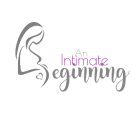SPECIFIC LEARNING OBJECTIVES:
At the completion of this course, the students will be able to demonstrate knowledge and skills in the following areas:
- Describe the layers of the uterus;
- Describe the direction of the fibers of the myometrium;
- List the four main uterine divisions;
- Identify the parts of the uterus;
- Identify the ligaments associated with the uterus;
- Define prefixes, roots and combining forms, and suffixes of terminology of the uterus;
- Explain some functions of the ovaries including hormone production;
- Identify the parts of the external female genitals;
- Identify the parts of the breasts;
- Define prefixes, roots and combining forms, and suffixes of terminology of the breast;
- Identify the bones and landmarks of the pelvis;
- Name the pelvic joints, their type, and what bones they join;
- Name the pelvic ligaments and describe where they attach;
- Describe the four most important pelvic planes;
- Delineate between the gynecoid, android, anthropoid, and platypelloid pelvises;
- Identify the bones, sutures, fontanelles, and other landmarks of the fetal skull;
- Name the diameters of the skull and identify which diameter goes with which fetal position;
- Differentiate between caput and a cephalohematoma;
- List the three main presentations;
- Determine the denominators for various presenting parts;
- Define engagement, station, synclitism;
- Differentiate between synclitism, posterior asynclitism and anterior asynclitism;
- Understand practical hints for working with the pelvis;
- Identify and explain the functions of the muscles of the pelvic floor;
- Identify and explain the functions of the muscles of the perineum;
- List the muscles that junction at the center point of the perineum;
- Outline the reproductive cycle including the processes of ovulation, menstruation, and hormonal changes;
- List some signs of ovulation including changes in cervical mucus and basal body temperature relate them to hormonal changes;
- Outline how fertilization changes the menstrual cycle including hormone changes:
- List some hormonal changes as menopause begins;
- Define prefixes, roots and combining forms, and suffixes of terminology of hormones;
- Define prefixes, roots and combining forms, and suffixes of terminology of menstruation;
- Define prefixes, roots and combining forms, and suffixes of terminology of hemo or blood;
- Describe the process of fertilization;
- Outline the development, structure, and functions of the placenta including the transport mechanisms;
- List placental hormones and their functions;
- Explain the formation, structure, and functions of the amnion and chorion;
- Describe the creation and functions of amniotic fluid;
- Outline the development, structure, and functions of the umbilical cord;
- Explain fetal circulation;
- Differentiate between the intrauterine and extrauterine circulatory functions;
- Summarize the significant changes in growth and development of ovum, embryo, and fetus;
- Describe the teratogen sensitive periods in human development;
- Define prefixes, roots and combining forms, and suffixes of terminology of tissues; and
- Define prefixes, roots and combining forms, and suffixes of terminology of human development
Midwives College of Utah. (2021). BIOL 1050- Anatomy and Physiology of Obstetrics Syllabus.
